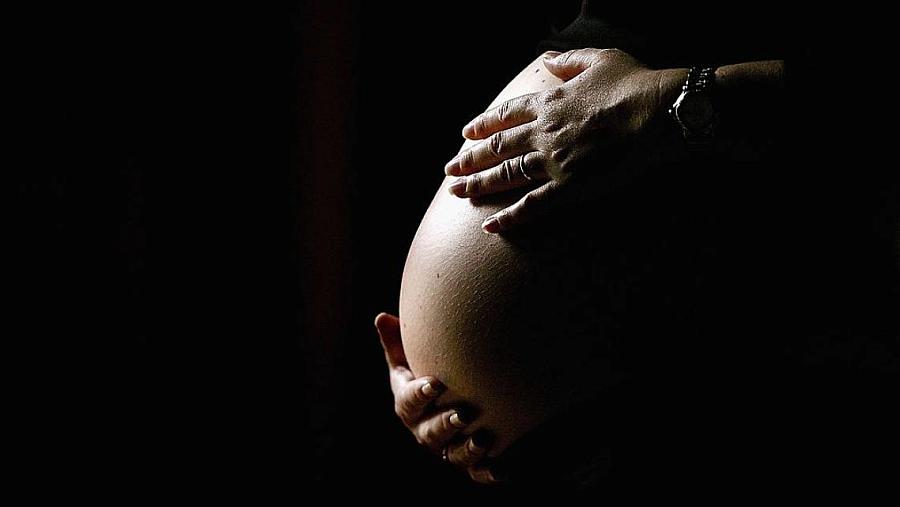Race matters more than income in explaining why childbirth is far more deadly for Black families

(Photo by Ian Waldie/Getty Images)
The notion that gaping racial inequities plague U.S. maternal and infant health is well documented. Black woman are three times more likely to die from a pregnancy-related cause than their white counterparts, according to the Centers for Disease Control and Prevention.
But much less has been understood about the intersection of race and economics. In other words, are wealthy Black mothers more protected from these health inequities? An answer came via a landmark study recently published by the National Bureau of Economic Research.
Even rich Black mothers were more likely to lose their babies than poor white mothers. Parental income wasn’t shielding Black families from these dire outcomes.
“The racial gap is so big even at the top of the income distribution,” explained Maya Rossin-Slater, one of the study’s authors and an associate professor of health policy at Stanford University. “… the gaps by race are just really troubling.”
Rossin-Slater described her team’s findings and their implications for fellows at the 2023 Center for Health Journalism California Health Equity Fellowship this week. More knowledge on inequities that persist despite higher levels of income could shape future interventions and outcomes, she stressed.
Why didn’t we know?
The connection between parental income and maternal and infant health outcomes have long been apparent in the United States. Gaps by race are also well-documented. Some research has even found that inequities in pregnancy-related mortality rates persist even when comparing Black and white woman with similar educational levels.
But Rossin-Slater and her colleagues sought to move beyond education as a proxy for income. They wanted to know how outcomes compare between high-income Black and high-income white mothers. That would help answer the broader question of whether health disparities were more closely tied to a mother’s wealth or structural racism.
To answer that question, researchers had to gather data that linked maternal and infant health outcomes with income level, a challenging feat. Births and death records excluded income information. Previously, some researchers would use country of residence and its median income, an imprecise measure given the wide-ranging economic levels within such a broad geographic area.
Instead, this latest study brought together troves of California data – including tax records, birth, death, and hospitalization records – to fill in these gaps, allowing for an unprecedented portrait of race, economic status, and outcomes.
Important and distressing findings
The most “important and distressing” finding came from the high rates of low-birth-weight babies and preterm birth rates for Black mothers regardless of income level, she said. The inequities between these Black mothers and other racial and ethnic groups did not change even as income increased.
“These are large differences and they’re statistically significant,” Rossin-Slater said.
Across all income levels, Black infants and mothers experienced worse health outcomes than their non-Hispanic white counterparts, the study found.
Even at the top of the income distribution level, the rates of low birth weight and preterm birth rates for infants born to Black parents were about one and a half times higher than those born to white parents at the bottom of the income distribution.
For infant mortality, Black infants in the top income distribution experienced 4.3 deaths per 1,000 births, or 23% higher than the 3.5 deaths per 1,000 births among the white infants at the bottom income decile, the study showed.
Another noteworthy finding came by analyzing low-birth weight babies for white women. Surprisingly, higher rates were found among white mothers with higher income levels. That was likely a result of fertility treatments such as IVF — and the higher likelihood of bearing twins that this medical care carries — among wealthier mothers. Twins are more likely to be preterm. Despite those birth outcomes, the wealthiest white woman gave birth to babies who were the least likely to die. One possible reason is that these mothers have better access to first-rate health care and technology, which can make a big difference in whether at-risk infants survive.
“This finding suggests that pregnancies carried by women at the top of the income distribution are not only the riskiest, but also the most protected,” according to study authors who speculated that factors such as high-quality childcare, paid family leave and other family support might create broader resources inequities.
Long-lasting health implications
These findings are particularly worrying, since one’s health at birth matters for later-in-life outcomes, Rossin-Slater noted. These early health measures can influence everything from economic productivity and educational attainment to life expectancy.
Understanding that racial inequities exist despite income levels will be key in motivating future research and interventions.
“If we want to achieve health equity and if we want to improve health outcomes for racial minorities and especially Black families, targeting interventions based on income or socioeconomic status alone is really not going to get us there,” she said. “We must really tackle the big structural barriers and racism that is embedded in our society — within the health care system as well as outside the health care system — that is contributing to these gaps.”

